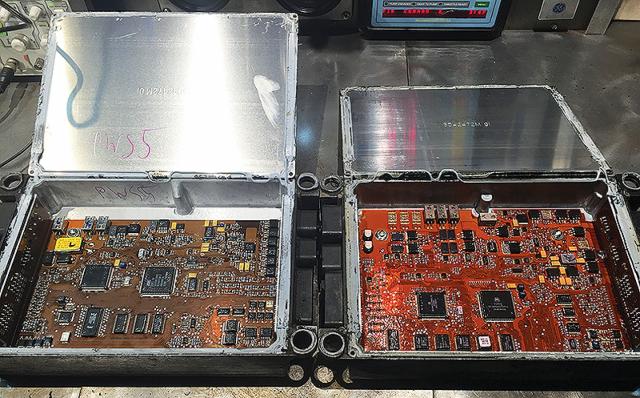Swapping DDECs And Making Assumptions

Last month I listed four different Series 60 430hp programs commonly equipped from the factory for 12.7 Series 60 engines originally built from 1995 to 2002. We saw a 430hp 1650ftlbs can make almost 50 more horsepower at 1200 rpm than a 430hp 1350ftlbs can. Based on that information alone you’d think swapping a 1995 430hp 1450ftlbs DDEC III for a DDECIV off of a 2001 BK60 430hp/500hp 1650 ftlbs would give you more horsepower. Here’s the catch…Those two programs go on two very different 12.7s. The 1650flbs programs (including the 500s) are calibrated for larger capacity injectors, different camshafts, and a ton of other differences. Making this swap without correcting for these differences will not only cause timing issues but in most cases, cause a loss of power compared to a lower torque program that’s properly calibrated for the parts you have. Most of programming related problems I see are because of someone miss identified a 12.7 or assumed two 12.7s were the same. So far I’ve recorded 19 different factory fueling and timing combinations among the 12.7 Series 60s. When you look at how many different camshafts, injectors, and pistons are available for Series 60 engines it becomes clear as to why this must be considered and corrected for. Many experienced and big name Detroit programmers make this mistake. I’ve even had a few cases when the dealer unknowingly did this and assumed a low NOx update was to blame for the poor performance.
Just last week I got a job in from an owner-operator in Arizona running a 1999 12.7 BK60 with a 500hp 1650ft program. He was having trouble with a DDEC he recently purchased from one of the larger Texas based ECM rebuilders. He went to them when his original DDEC IV was giving him trouble. They took his DDEC IV as a core and sold him a replacement. He noticed a significant loss of power as well as other issues. After a few attempts to work out the problem with them got him nowhere he gave me a call. The first thing I noticed when I got his DDEC on my test bench was that it was a DDEC III. The latest program available for the DDEC III was the 1998 500hp 1650ftlbs GK60 program and sure enough that’s what was programmed in. To someone who sits in an electronics repair shop and doesn’t have much if any engine or mechanical experience this might seem like a good idea. The 500hp 1650ftlbs 1998 12.7 GK60 and the 500hp 1650ftlbs 1999 12.7 BK60 have different camshafts, different capacity injectors and many other differences. When I told the owner-operator that these guys took his DDEC IV and had sold him a DDEC III he was understandably upset. The DDEC he was sold had the label removed so unless it was internally inspected or plugged into it was impossible to tell. In the used/core DDEC market the value of a DDEC IV is higher than that of a DDEC III. It’ll run but it won’t be right. DDEC IIIs and DDEC IVs calculate their timing and fueling differently and DDEC IV programs are too large and complex to run in a DDEC III. The owner told me he was done with the rebuilder in Texas and after talking things out with him I had an idea. At DCS I have two fully functional Detroit test benches. On one I ran a DDEC IV with a factory 500hp 1650ftlbs 1999 12.7 BK60 program and on the other his DDEC III. After about two days of injection duration and timing corrections the DDEC III was running within 1.2 percent of the DDEC IV.
Written by Fernando DeMoura, Diesel Control Service LLC. Website: www.dieselcontrolservice.com Phone 412-327-9400
